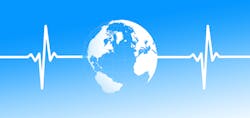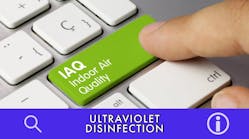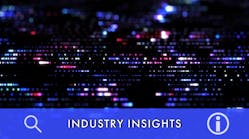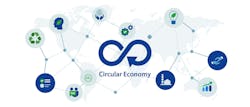Survey says: Lighting for health is a burgeoning SSL app (MAGAZINE)
We recently fielded our first ever State of the Industry Survey in which we asked our audience about what they do and what
they think about the LED and solid-state lighting (SSL) sectors. The survey covered technology to economic outlook. We have a feature article that covers the highlights in this issue. Here, I would like to discuss an application that I think has been seen as a niche, but that our survey suggests may quickly become more mainstream — lighting for health and wellbeing.
Our topic at hand goes by many names, including the lighting for health moniker. We started off calling it human-centric lighting. I think we published the first article on using a tunable spectrum to elicit a positive physiological response from
humans back in 2011 or 2012. The human-centric lighting term has fallen from favor, and some now call it integrative lighting. I’ve never really understood the argument over what it’s called so long as everyone knows what is generally meant by it, but I digress.
In any event, lighting for health applications have been limited by a number of factors including lack of research that completely documents the response of humans from light exposure to the nonvisual receptors. Lack of metrics had been an issue. And cost of the required multichannel SSL systems needed to vary spectra has been an obstacle.
Europe has certainly made more progress in the application than has North America. But globally, the application has progressed far more slowly that I would have predicted when I first learned of the concept in 2011 or 2012. And even the research by our sister business unit Strategies Unlimited has suggested a limited opportunity for lighting for health products.
Our State of the Industry Survey doesn’t offer me any conclusive data on the reality of the opportunity. But it would sure imply that a lot of companies are pursuing lighting for health product developments and deployments.
Digging into the detailed responses to one particular question in our survey, just over 12% of the respondents said they are
100% focused on lighting for health applications. That number combines product developers of luminaires and lighting designers/specifiers. Broaden the scope to what our audience works on always, often, or sometimes, and the total climbs to near 60%.
Indeed, lighting for health and wellbeing outscored all of the other niche applications in the survey. I would not have expected huge numbers for, say, automotive lighting. We know that the field of professionals in that area is small yet dedicated
completely to the automotive task. But our survey suggests that far more lighting-sector professionals are working on lighting for health than are working on horticultural lighting. Yet we know how many lighting manufacturers have rushed into the horticultural lighting space in the past year.
The next time we do similar research, we will push deeper into the area of lighting for health. I suppose there is a relatively broad set of product types that could be considered, including disinfection products and luminaires used in settings such as clinical exam rooms. But another of our questions supports the theory that most of our respondents were focused on varying spectra for positive effects.
Maury Wright, EDITOR
[email protected]

Maury Wright | Editor in Chief
Maury Wright is an electronics engineer turned technology journalist, who has focused specifically on the LED & Lighting industry for the past decade. Wright first wrote for LEDs Magazine as a contractor in 2010, and took over as Editor-in-Chief in 2012. He has broad experience in technology areas ranging from microprocessors to digital media to wireless networks that he gained over 30 years in the trade press. Wright has experience running global editorial operations, such as during his tenure as worldwide editorial director of EDN Magazine, and has been instrumental in launching publication websites going back to the earliest days of the Internet. Wright has won numerous industry awards, including multiple ASBPE national awards for B2B journalism excellence, and has received finalist recognition for LEDs Magazine in the FOLIO Eddie Awards. He received a BS in electrical engineering from Auburn University.


![The DesignLights Consortium continues to make progress in shifting outdoor lighting products and implementation practices toward a more restrained and thoughtful strategy. [Image does not represent a DLC qualified fixture.] The DesignLights Consortium continues to make progress in shifting outdoor lighting products and implementation practices toward a more restrained and thoughtful strategy. [Image does not represent a DLC qualified fixture.]](https://img.ledsmagazine.com/files/base/ebm/leds/image/2024/08/66be810888ae93f656446f61-dreamstime_m_265700653.png?auto=format,compress&fit=&q=45&h=139&height=139&w=250&width=250)


